Danville, Virginia’s workforce training program has an accelerated timeline, which is ideal for adult students who want to learn a new career.
Jeff, the attached article is so disturbing on many levels I could probably write pages. Instead I’ll just include a few of the more obvious glaring issues.

Washington – Do You THINK That He is PISSED?
* Why the hell don’t they recruit US Citizens? Why are we always placed at the back of the buss but expected to pay for everything? This isn’t even a Diversity Hire. It’s a complete sellout to all US Citizens.
* Can a man whom abandoned his family ever be trustworthy enough to hold TSC clearance and build nuclear submarines?
* Is it remotely possible to train anyone to a high-enough skill level for this job in sixteen weeks? I completed a BSc in Industrial Engineering. I promise you, it’s impossible. Worse, many of their candidates don’t even hold HS degrees. So, their building nuclear submarines and never completed HS Algebra? You cannot learn machining, welding, metrology, plant layout, etc. and go build anything of quality in sixteen weeks. Even more so if you don’t speak English with no foundational education.
* They need 100K skilled non-American workers over the next ten years. What the hell kind of a war are they expecting, I mean, creating?
* Notice our malevolent benefactors have plenty of cash to invest into their goddamned war plans, but only scraps for the rest of us.
* What the hell kind of a reality are we living in?
I hope to hell the aspiring Sailors are informed about the junk-heaps they’ll be serving inside before they sign the dotted line. Seems like the Navy tried this before and it resulted in the loss of a Sub or two.
Sincerely,
D. Hogan
The INVASION
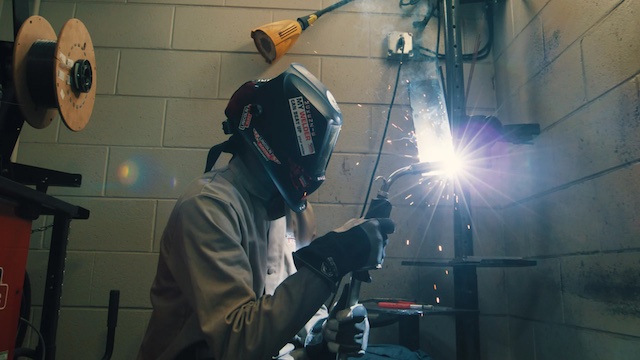 The remnants of Danville’s past are something of a metaphor for the small city in Southern Virginia. Old brick factories dot the shores of the Dan River, several of them undergoing conversions into hip, new apartment complexes. Boutiques occupy what used to be mom-and-pops that once served the town’s blue-collar workforce. Coffee shops and cafés sit on the ground floor of old warehouses throughout the downtown area. Banners hang from lamp posts with imagery of a computer circuit bordering the word “Reimagine,” telling visitors where this old tobacco-and-furniture town in the heart of race-car country is trying to head.
The remnants of Danville’s past are something of a metaphor for the small city in Southern Virginia. Old brick factories dot the shores of the Dan River, several of them undergoing conversions into hip, new apartment complexes. Boutiques occupy what used to be mom-and-pops that once served the town’s blue-collar workforce. Coffee shops and cafés sit on the ground floor of old warehouses throughout the downtown area. Banners hang from lamp posts with imagery of a computer circuit bordering the word “Reimagine,” telling visitors where this old tobacco-and-furniture town in the heart of race-car country is trying to head.
At the edge of Danville sits the Institute for Advanced Learning and Research. Its small campus of a handful of modern, glass-sided buildings is tucked neatly at the entrance of a business park. Working in concert with Danville Community College, the Institute – referred to as “IALR” in internal shorthand – is geared toward the transformation and growth of Southern Virginia’s economy through a focus on its five divisions: advanced learning, applied research, manufacturing advancement, economic development, and conference services.
A recently added sixth element is the Accelerated Training in Defense Manufacturing program, or “ATDM,” a program that was first conceived in 2018 and started in June 2021, when the United States Department of Defense (DoD) partnered with the strategic consulting firm Spectrum Group on an advanced-workforce-development pilot program.
Within ATDM, a unique phenomenon has taken root and become one of the program’s defining traits: Most of the program’s graduating classes have included Afghan refugees, many of whom escaped their country as it fell to the Taliban in mid-August 2021.
The program calls these students “Afghan Allies,” at least two of whom have since began working with the program as translators and recruiting coordinators for other refugees in search of work.
 Facing an atrophying industrial base and ever-shrinking numbers of new skilled laborers, the DoD hoped to drum up interest in blue-collar jobs in order to funnel people into defense work, specifically the submarine industrial base, which is a major focus of the DoD in the coming years. The Navy needs an additional 8,000 to 10,000 workers each year for the next 10 years to build the new Columbia-class nuclear submarine – which will replace the force’s aging Ohio-class subs – along with providing a minimum of two new Virginia class attack submarines every year.
Facing an atrophying industrial base and ever-shrinking numbers of new skilled laborers, the DoD hoped to drum up interest in blue-collar jobs in order to funnel people into defense work, specifically the submarine industrial base, which is a major focus of the DoD in the coming years. The Navy needs an additional 8,000 to 10,000 workers each year for the next 10 years to build the new Columbia-class nuclear submarine – which will replace the force’s aging Ohio-class subs – along with providing a minimum of two new Virginia class attack submarines every year.
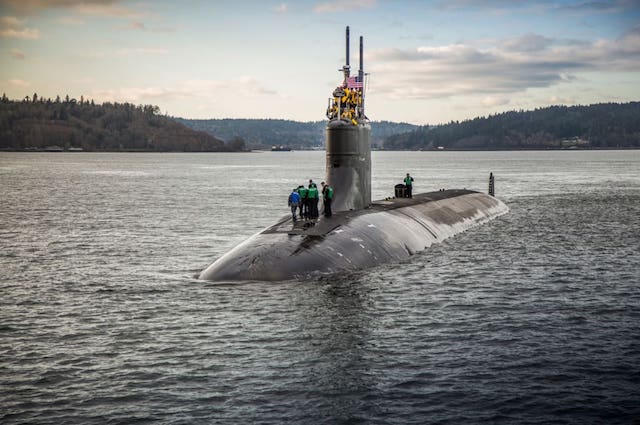 One of the Spectrum Group’s leading consultants was Norbert Ryan, a retired Navy Admiral, armed with a litany of connections across the defense industry and on Capitol Hill. With Ryan and Spectrum working as something of a conduit, Danville and the IALR raised more than $7 million to jumpstart the ATDM program, whose focus would be to certify students in one of five disciplines: welding, computer numerical control (CNC) machining, metrology (aka quality assurance), additive manufacturing (aka 3D printing), and nondestructive testing.
One of the Spectrum Group’s leading consultants was Norbert Ryan, a retired Navy Admiral, armed with a litany of connections across the defense industry and on Capitol Hill. With Ryan and Spectrum working as something of a conduit, Danville and the IALR raised more than $7 million to jumpstart the ATDM program, whose focus would be to certify students in one of five disciplines: welding, computer numerical control (CNC) machining, metrology (aka quality assurance), additive manufacturing (aka 3D printing), and nondestructive testing.
However, unlike more traditional training methods, which would take students upwards of a year or more at community colleges or trade schools, ATDM certifies their students in just 16 weeks. Rather than course loads saddled with classes they don’t need for their future trades, ATDM streamlines their curriculum. Students study their chosen discipline for eight hours each day, five days a week. The accelerated timeline is enabled by offering students a no-cost education, allowing them to focus fully on their training, and giving them access to a free apartment in Danville during the program. Once completed, ATDM pays students’ first month’s rent, wherever they move for a job.
Rather than focusing on recent high school graduates, Ryan and the team at ATDM set out to recruit adult learners, people in search of a career change to a more stable industry, and the underemployed or unemployed. According to Ryan, the level of focus and commitment required for the program is better suited to adults. Still, the group was happy to welcome a few recent high school grads into their first few rounds of programming.
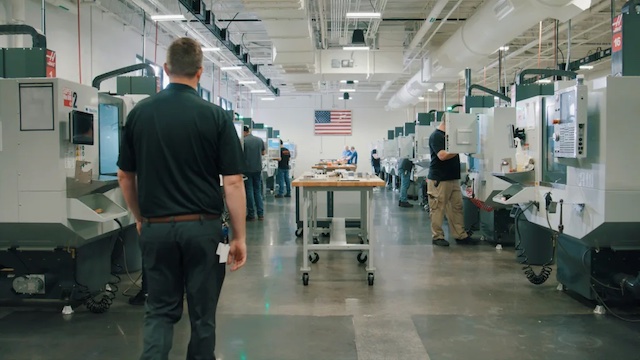 In spring of 2021, Rear Admiral Scott Pappano, the Navy’s head of strategic submarines, visited ATDM, fully committing the Navy’s support soon after. That June, the ATDM program welcomed its first cohort.
In spring of 2021, Rear Admiral Scott Pappano, the Navy’s head of strategic submarines, visited ATDM, fully committing the Navy’s support soon after. That June, the ATDM program welcomed its first cohort.
In March 2022, as IALR was bidding farewell to its second rotation of ATDM students, Whitney Jones, a civilian with the Navy focused on workforce development in the submarine-industrial base, approached her colleagues with a new idea: Kabul had recently fallen and America had a sudden influx of Afghan refugees, many of whom were stuck waiting around at military bases.
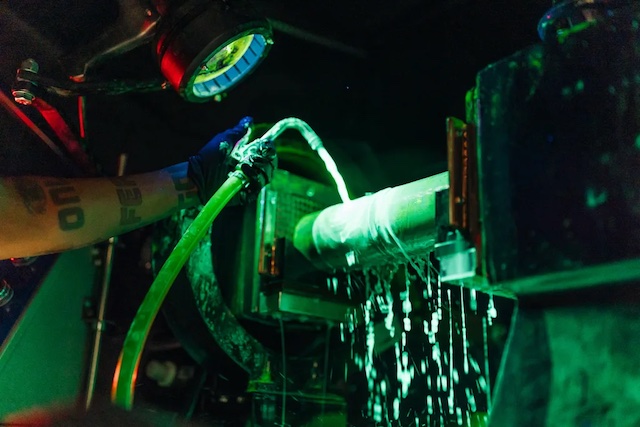 “To reach what we need to build submarines – which is 100,000 tradespeople over the next 10 years – we have to be thinking about other populations of people,” Jones said. “[That] includes transitioning military and veterans, legal immigrants, and Afghan refugees.”
“To reach what we need to build submarines – which is 100,000 tradespeople over the next 10 years – we have to be thinking about other populations of people,” Jones said. “[That] includes transitioning military and veterans, legal immigrants, and Afghan refugees.”
Many of the refugees came to America with advanced degrees and educations that far outweighed the low-wage, low-skill work they might otherwise be destined for. Might ATDM be willing to enroll some of them?
One month later, three Afghan refugees were enrolled in ATDM. A man named Baryali (who requested his last name not be used in order to protect family members still in Afghanistan) was among them.
Baryali is a veteran journalist who, courtesy of his work with a handful of Western media outlets, suddenly found himself on a Taliban hit list as the group took power. Like thousands of other Afghans, Baryali fled his home as Kabul collapsed, first making his way across the border to Pakistan, then Qatar, Virginia, and finally Maryland, where he settled into a small but tight-knit Afghan community. Like thousands of other Afghans, Baryali left family behind. For him, a wife and their month-old son. Both lacked the requisite paperwork to escape Afghanistan.
In March 2022, Baryali was working in the customer service department of a Washington D.C.-area Walmart when he heard about ATDM. He had no experience in any of the fields the program was offering training in, but he knew he had to figure out how to lay the foundations of a better life in America. He sent a résumé immediately, accompanied by a note asking for a chance to prove himself.
“I had a really good life in Afghanistan,” Baryali said. “So working at the Walmart, I thought I had to chase some education here. ATDM was the program where I could go and get some skills.”
A few weeks later, Baryali was in Danville to begin his 16-week program learning the ins and outs of additive manufacturing. However, on finishing the program and earning a national certification, the administrators at ATDM tapped Baryali. His fluency in English made him an ideal candidate to help the program recruit more Afghan Allies, and to work as something of a liaison, translator, transportation coordinator, tutor, and one-man welcoming committee for incoming Afghans.
Working closely with a selection of American resettlement agencies, Baryali – along with two other Afghan recruitment specialists who also graduated from ATDM – maintains an up-to-date list of Afghan refugees. He extolls the virtues of ATDM: national certification in in-demand fields, free room and board, no-cost education and, most importantly, the promise of a better future. There’s also a strong word-of-mouth network in the refugee community, making Afghan Allies, who are either currently enrolled or recently graduated, some of the program’s strongest recruitment tools.
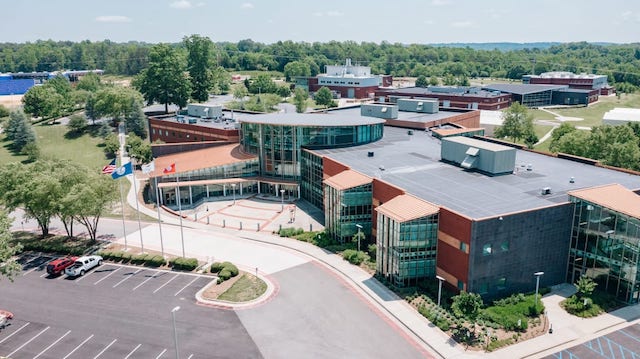 In October 2023, ATDM broke ground on a state-of-the-art 107,000-square-foot facility that is slated to open in January 2025 and will be fully dedicated to the program. Though digital renderings of the new building feature a replica of a submarine sail toward the facility’s entrance, there is no requirement for ATDM graduates to work in the defense industrial base.
In October 2023, ATDM broke ground on a state-of-the-art 107,000-square-foot facility that is slated to open in January 2025 and will be fully dedicated to the program. Though digital renderings of the new building feature a replica of a submarine sail toward the facility’s entrance, there is no requirement for ATDM graduates to work in the defense industrial base.
A few weeks before the groundbreaking, Baryali visited Northern Virginia, sharing information about the program with more than 1,000 Afghan immigrants and refugees gathered in a park to celebrate the anniversary of Afghanistan’s 1919 independence. Over the next few weeks, ATDM received dozens of applications from potential Afghan Allies who met Baryali there.
At any given time, ATDM is sitting on about 150 applications from Afghan refugees. However, due to the interview process, the number in each cohort fluctuates. In the first cohort of 2023, 10 of ATDM’s 24 students were Afghan Allies. A springtime cohort counted four. As of this writing, five of the program’s current cohort are Afghan Allies.
“Everyone is trying to fix their life,” said one recent graduate, who also asked that his name not be used for fear of Taliban retribution. “And there are a lot of challenges in a new life.”
[All photos courtesy of IALR]
Written by Michael Venutolo-Mantovani for Fast Company ~ August 19, 2024
